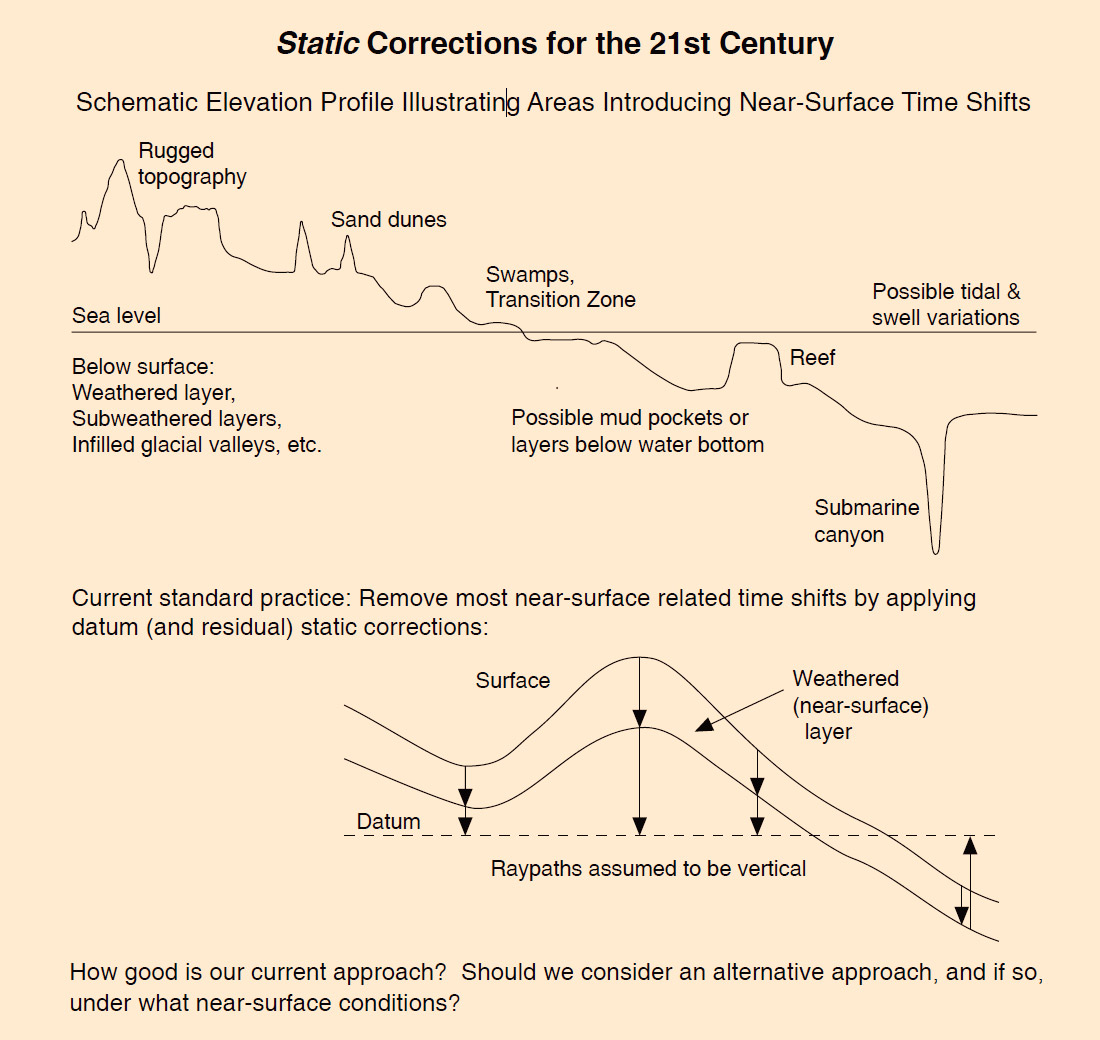Static corrections are routinely applied to almost all surveys. In the past, the main emphasis has been for the computation and application of datum and residual static corrections on land and transition zone surveys. For marine surveys, static corrections are used to adjust the data to a sea-level datum with the application of source and streamer corrections. In some surveys, static correction adjustments are made for calendar time-variant changes in seawater elevations (tides), salinities, and temperatures, and subwater-bottom features such as those in the Mississippi Delta. More recently, the introduction of ocean-bottom recording requires that potentially large near-surface time shifts be applied in marine processing to convert data to a sea-level datum.
A simple raypath analysis demonstrates that the vertical raypaths assumed by the application of static corrections are incorrect. Raypaths through the near-surface layers are rarely vertical, although there are many areas where vertical travel is a good approximation. The relationship of static corrections to other data processing techniques also needs to be considered; for example, a large vertical shift (static correction) followed by migration, which assumes that raypaths (wavefronts) are followed from source to receiver elevations, is obviously not an optimum approach.
To put these approximations into perspective, the potential errors in the vertical raypath assumption of static corrections will be discussed for various land and marine scenarios; this analysis will show types of near-surface problems where static corrections represent a good approximation and those where an upgraded approach should be considered.
We should compensate for near-surface features and elevation differences with corrections which take the non-vertical raypaths in the near surface into account; that is, they need to be applied as dynamic corrections so that the time shifts are functions of reflector depth and source-to-receiver offset. Various techniques have been proposed to correct for near-surface irregularities in addition to static corrections, and these will be reviewed. These techniques include wave-equation datuming, layer replacement, model-based ray-traced time shifts (dynamic static corrections), offset- dependent static corrections, and depth migration.
Velocity-depth models are required for procedures such as NMO corrections, static corrections and depth migration. In the case of static corrections, such a model is limited to the near surface which varies from a simple one for source and streamer depths of a marine survey, to potentially very complex models for some land surveys. A detailed near-surface model is required for wave-equation datuming and layer replacement, and in the marine case, this requires water velocity and water depth profiles. Techniques such as model-based ray-traced time shifts require both near-surface and deeper velocity-depth models, although some implementations have used simple models at depth. This model requirement often places limitations on approaches that can be applied to a data set, and is dependent on the sensitivity of the technique to errors in the velocity-depth models. Aspects of this error sensitivity will be discussed.
Many of the techniques used in geophysical data analysis are based on approximations, but generally constitute a practical or pragmatic approach to solve a specific problem; this is certainly the case for static corrections which, in spite of their shortcomings, have served the industry extremely well. Is it now time to phase out their usage for certain types of near-surface conditions so that their application is consistent with the wave equation?












Join the Conversation
Interested in starting, or contributing to a conversation about an article or issue of the RECORDER? Join our CSEG LinkedIn Group.
Share This Article